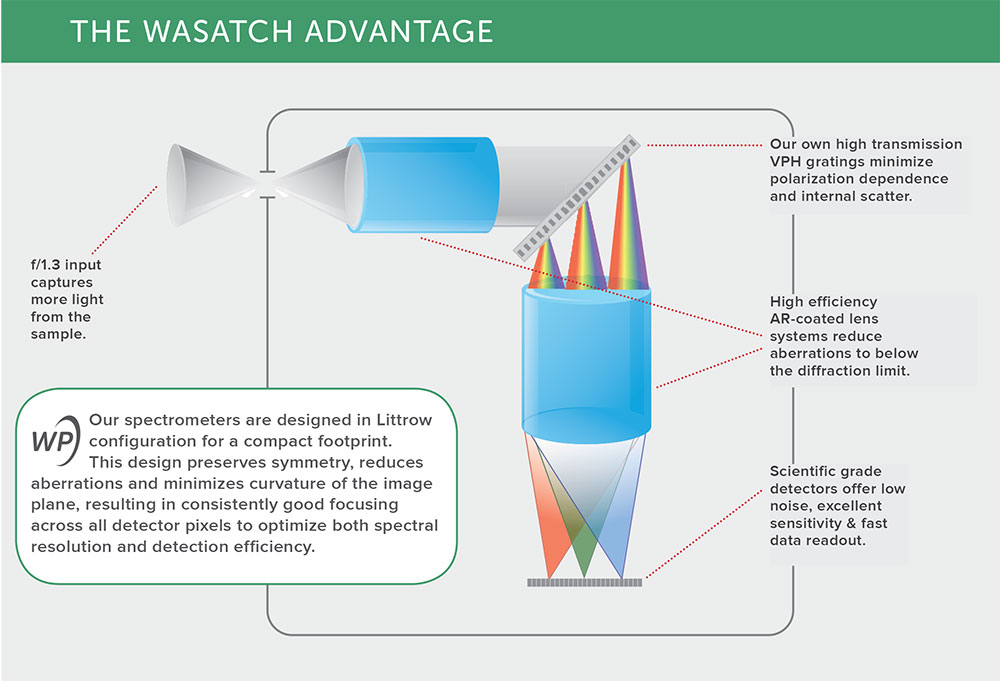Collect More Light. Keep More Light. Detect More Light.
This may sound simple, but it’s the driving force behind all we do – because it makes for good spectroscopy. Starting with the proprietary volume phase holographic (VPH) gratings on which the company was founded, we’ve designed a spectrometer that maximizes efficiency at every step. By keeping more light in the optical path, we reduce stray light within the bench, thus increasing signal while reducing noise.

HERE’S HOW WE DO IT:
- Collect more light – We use a high NA (low f/#) spectrometer input, which captures more light from the sample. Our user-configurable probes have been designed to match, and come with compatible fibers to maximize light collection.
- Keep more light – At the heart of each spectrometer is one of our own VPH transmission gratings, offering high efficiency over broad bandwidths with little polarization sensitivity and minimal scatter. This allows us to use a Littrow configuration for a small footprint, easier alignment, and less temperature sensitivity. The transmission-based design also preserves symmetry to ensure better focusing of light onto the detector plane, and allows the use of custom AR-coated lens systems to reduce aberrations to below the diffraction limit – keeping every possible photon.
- Detect more light – We scour the market for the best detectors, looking for low noise, excellent sensitivity, and fast data readout. We offer a choice of detectors to meet a variety of application and use-case needs, from small, cost-effective, uncooled detectors for rapid handheld measurements to premium, ultra-cooled detectors for research (and everything in between!).
HERE’S WHAT THIS MEANS FOR YOU:
Higher sensitivity:
- Capture brief phenomena, even at low light levels
- Minimize laser exposure for delicate samples
- Significantly reduce your measurement time
Faster acquisition rates:
- Better spatial resolution in 2D scanning applications
- Ideal for rapid process monitoring, product scanning
- Allows increased averaging to maximize S:N
Lower limit of detection:
- Detect illicit materials at trace levels in surface residues
- Identify banned substances & contaminants on or in foods
- Develop quantitative models down to low concentration
Learn how this translates into better performance for Raman spectroscopy


